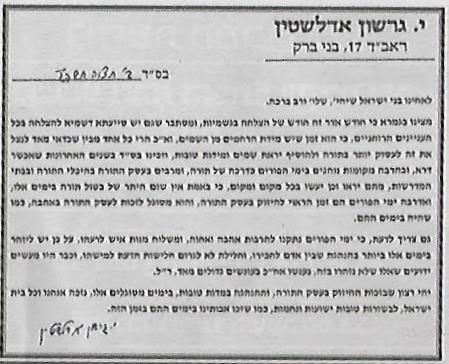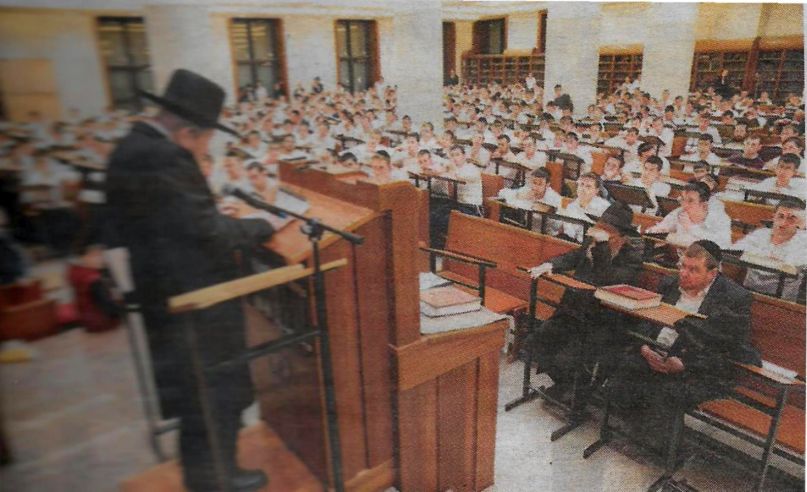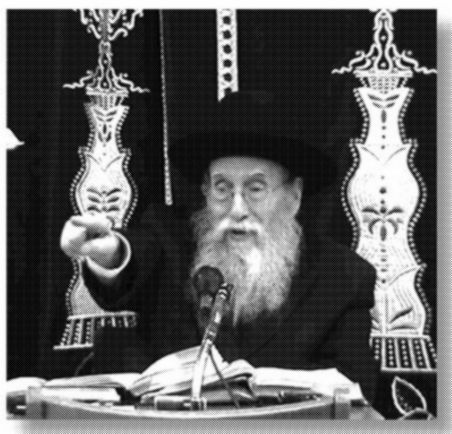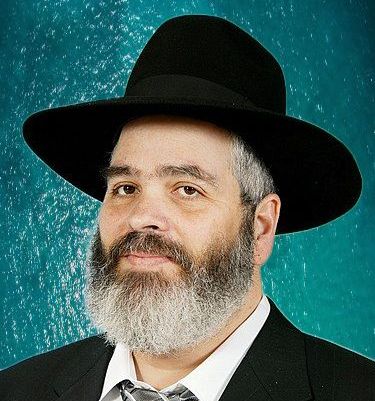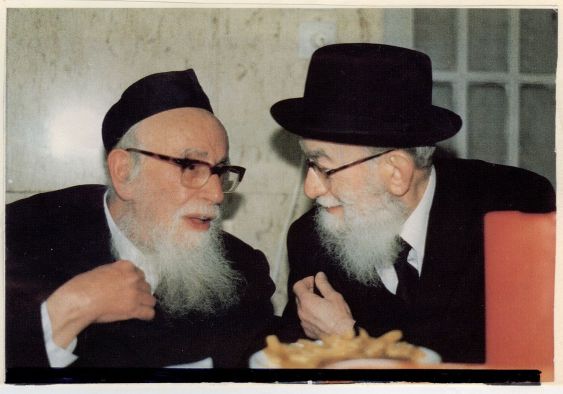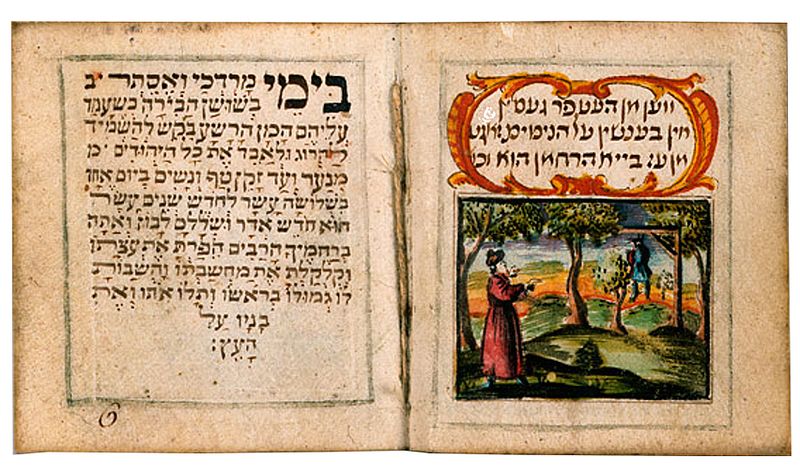  |
|
| |||||
This Google Custom Search looks only in this website. A letter about Purim from the Rosh Yeshiva Y. Gershon Edelstein shlita
To our brethren, may they be well!
Greetings and Blessings.
The gemara teaches that the month of Adar is one of material success, and understandably, there is also Siyata deShmaya in spiritual things as well, since this is a time where the Attribute of Mercy reigns in Heaven. If so, everyone understands that it is most opportune to be involved in increased Torah study and increase one's yiras Shomayim and character building.
We have witnessed in these past years that this generation has begun celebrating Purim in the Torah-true fashion, by filling the shuls and yeshivos with Torah study, as should be practiced in all places. Truly, there is no allowance for being lax in Torah study during these days. On the contrary, these days are propitious for increased study and they are, in fact, geared for study through ahava, as was true in those very days of yore.
Speaking at the Nesivos Chochmah yeshiva whose rosh yeshiva is HaGaon Rav D. Wolfson, where he goes periodically to deliver shiurim, HaRav Lando said afterwards:
"You study Torah. Fortunate are you for you are upholding the world. Persevere in your studies and be successful. Bear especially in mind to hear well what you are being taught. You are elite young bochurim immersed in study, ascending all the while.
"But you must specifically fortify yourselves in listening to what the Rosh Yeshiva and your rabbonim teach you. If you will listen, fine, but if you engage in all kinds of outings, you will be tempted to become erstwhile tourists. The path to becoming true scholars is only by learning and reviewing what your teachers in yeshiva say. This is the only way to succeed in Torah: to heed their lessons, for only they know what is truly good for you," he said.
The chareidi public numbers today over 1,300,000 people, comprising 17% of the total Jewish population of Israel.
The forecast shows that in a decade, the chareidi population will number 1.83 million people forecasted to be 21% of the Jewish Israeli population.
68% of this sector (averaging men and women) work full time or part time.
98% of the members of this sector have a bank account.
About 40% of them have more than one account.
In honor of Purim, we present these translations and excerpts from HaRav Brevda's world-famous shiurim on Purim, and his best-selling sefer on Megillas Esther and Purim — Kiymu Vekiblu — which was reprinted more than four times. They provide a deep insight into the underlying lessons of Purim. This was first published in the print edition in 1995.
The following commentaries are based, in part, upon the peirush of the Vilna Gaon zt'l on Megillas Esther, and Yosef Lekach, a peirush on the Megilla by R. Eliezer Ashkenazi, zt'l, written four hundred years ago.
Part II
Two Problems
We now face two problems. Esther must become the queen, because the salvation of Klal Yisroel is going to take place through her. In order to accomplish this, we must get rid of Vashti. Any rational calculation would take into account two things: Number one, Achashverosh will never get rid of Vashti (as previously explained). Number two, even if she died, Achashverosh would never marry a Jewish woman. Never! This is very clear.
What did Ben Gvir and Smotrich need this government for? Wouldn't it have been better for them to remain in the Opposition?
Ben Gvir, for example, as in the past, would have arrived first at every terrorist attack, been congenially greeted by the anxious citizens, would have listened avidly to the cries from all sides of "Death to the Arabs" or the more modified version which he insisted upon during his more moderate periods of "Death to the Terrorists." The public would surround him, hanging expectantly upon his every word, and Ben Gvir would not have disappointed them. He always knew who was to blame for the terrorist acts and whose hands were bloodied by the victims. If it was the Leftists government, the address was very clear. And if it was the Rightist camp, there too, he was able to find the current Leftist-leaner, who, him alone, was responsible for the lack of national security resulting in attacks and Jewish fatalities.
Those were his good days in the Opposition, ...
This series of articles about HaRav Shlomo Zalman Auerbach zt"l was originally published in 1995 (5755), soon after the petiroh.
Part 3
(We continue Rav Dinkel's portrait of HaRav Shlomo Zalman, the
rosh yeshiva of Kol Torah, that appeared in last week's edition. )
"Moshe said to bnei Yisroel, perhaps you do not know how much anguish I underwent for the Torah, how much I toiled over it and how much I labored? I gave my life for it, and my blood. In the same way that I learned it in pain, you shall also learn it in pain." (Sifrei Ha'azinu)
We have no idea how much anguish HaRav Shlomo Zalman underwent for Torah, or of how much he toiled and labored over it. He occasionally saw fit to hint at this, for the benefit of his talmidim. He once turned to a bochur during the shiur and asked, "Where is the bochur who sits next to you? He hasn't been here for several days."
"He isn't feeling well," came the reply.
"What do you mean, `He isn't feeling well.'?" asked HaRav Shlomo Zalman.
When the bochur replied that his neighbor was suffering from a minor ailment such as flu or a strep throat, HaRav Shlomo Zalman was unable to contain himself. He knew what flu and strep throat were. He knew more too. He knew what it was to learn at full strength and with total concentration despite pangs of hunger and despite physical and emotional suffering — which he had undergone in his youth. (His brother said that doctors who examined HaRav Shlomo Zalman in his old age reported that the signs of the malnourishment he had suffered in his youth were still noticeable.) Then, concealing more than he revealed, he remarked, "If I would not have learned when I wasn't feeling well, then I wouldn't have learned at all while I was young."
Rain and Kinneret Watch by Dei'ah Vedibur
Staff
Our weekly report of the rain and the level of the Kineret -
Winter, 5783.
* * *
Outstanding Articles From Our Archives
Home and Family
by Rabbi Daniel Yaakov Travis
One day I saw an advertisement urging me to invest in a fund that promised me the highest possible returns on my capital.
This caused me to wonder: What are my assets? After some pondering I came to a firm conclusion - as Jews, our most valuable possession in this world is time. Our task in life is to ensure the highest possible gains on this commodity.
Therefore, knowing where we stand in the day, week and year is not just a matter of being organized; it is the key to the very purpose of our existence. Without this knowledge, we are unable to cash in on the most lucrative investment we can make - the time-bound mitzvos given to us in the Torah.
So it is not surprising that a Jewish leap-year, where there are two months of Adar, presents us with a serious dilemma: Should we observe Purim in the first Adar, or the second Adar?
By Risa Rotman
"Is this your first trip to Israel?" the dark, curly-haired girl asked her seatmate.
"Uh, actually it is. I wasn't really planning on coming to Israel, but this really cheap student trip came along and so I thought, 'why not?'" Becky answered. "How about you?"
"Yes, it's my first trip also, but my best friend has been learning in one of these religious girls' schools for the past year. She's been e-mailing me all year long with pictures and stories. I sort of feel like I've been there."
The seatbelt light went on and the two girls snapped themselves up. Becky and her seatmate, Susan, continued to chat during the long, tiresome trip.
"I'm wiped out," Becky said. "I was up until very late, getting everything ready. You know: passports, packing, shopping. It was all so last minute."
|
|||||



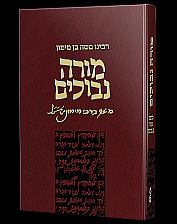
.jpg)
